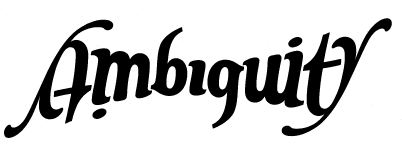
Ambiguity: Literary Term
Ambiguity Definition
Ambiguity is a literary device, the use of single word or expression to convey two or more distinct meanings, references, attitudes or feelings. Ambiguity as defined in The Bedford Glossary of Critical and Literary Terms, is “lack of clarity or uncertainty in meaning.” In true literary sense, when someone uses of language (a passage, statement, etc.) with no clear indication of its precise meaning, allowing for people to interpret it in different ways.
Although the application of ambiguity in literature is a stylistic fault, many writers use this technique to allow readers to understand their works in a variety of ways, giving them depth and complexity. Since William Empson published Seven Types of Ambiguity (1930), the term, however is widely used in literature.
Ambiguity Examples in Literature
For instance, William Blake’s “The Sick Rose”; the entire poem is delineated in ambiguous way:
“O Rose thou art sick.
The invisible worm,”
Here the ‘rose’ stands for innocence or ‘innocent ladies’ and the ‘worm’ is for ‘experience’. Also ‘crimson joy’ and ‘dark secret love’ bear some ambiguous meaning.
We find ambiguity in the first line of Keats’s “Ode to a Grecian Urn”:
“Thou still unravish’d bride of quietness,”
Also Read:
The use of word “still” is ambiguous in nature. “Still” here may mean “an unmoving object” or it may be interpreted as “yet unchanged.
The character of Hamlet in Shakespeare’s Hamlet is a morally ambiguous character full of “to be and not to be” crisis. He kills to avenge his father’s murder. He is good because he wants to protect his mother but he is bad because he is willing to kill whom he must to achieve this end.
The author does this for a variety of reasons, such as allowing readers to interpret their own ending, or to make readers re-consider the point of the literary work.